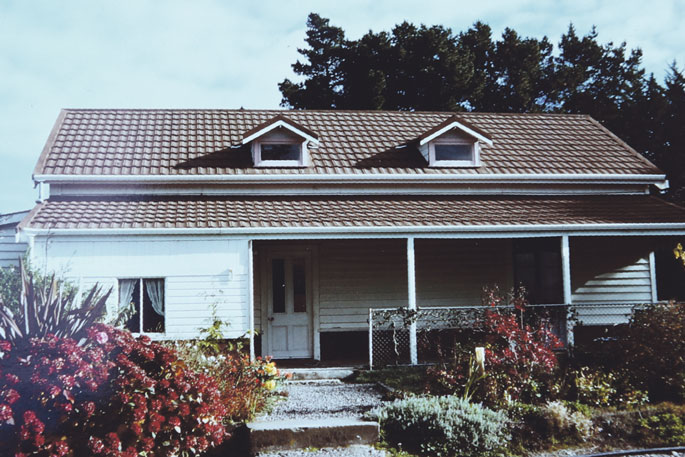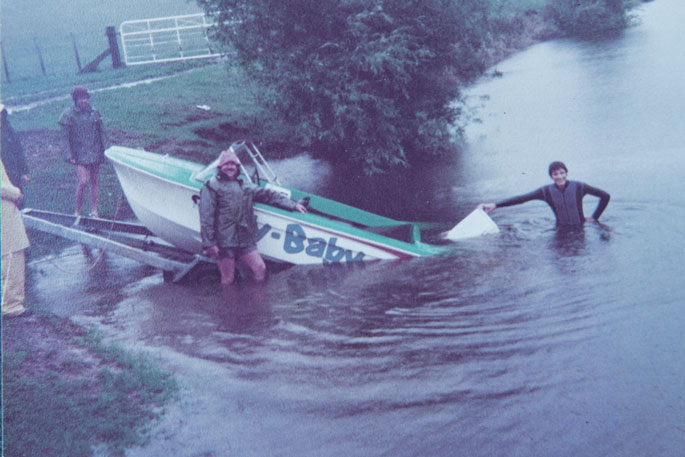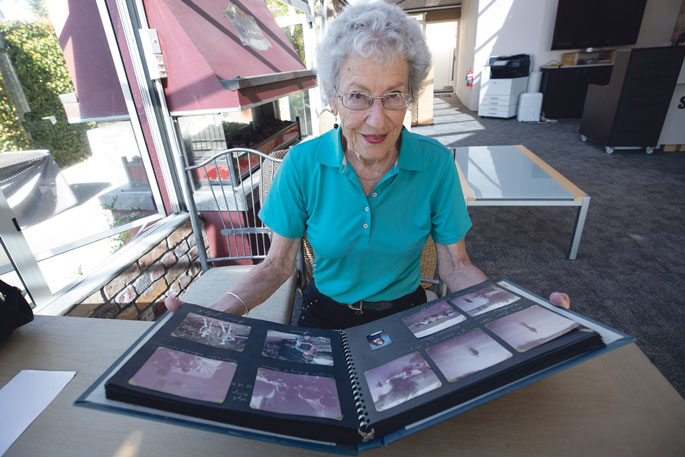When you live in a place long enough, you know the nature of the land – and you remember its history.
Ex-Hawke's Bay local Vivienne Shaw gives a personal account of the land she grew up on and spent most her life – sharing her thoughts on Cyclone Gabrielle's devastation to the region.
Alongside her husband of 60 years, Barrie Shaw, Vivienne enjoyed a rural lifestyle in Ongaonga – a central village of Hawke's Bay.
Now living locally in Welcome Bay, Vivienne lived in the Hawke's Bay for a total of 44 years. The pair still have many family and friends living in the region and Vivienne says they are all doing okay after the cyclone hit last month.
Her nephew, who lives in Latham St, Napier 'had the presence of mind to drive his big 4x4 to the top of a hill where he could get cell phone coverage”. 'He rang me on that afternoon to say that they were fine.”
Earthquakes and rivers
Vivienne, 81, and Barrie, 84, were both born after Napier's 1931 earthquake. 'But Barrie does remember the aftermath of it,” says Vivienne. 'It damaged a lot of the land and the buildings of the time. Then in 1938, more particularly there was the incredible massive Esk Valley flood – which has just been repeated – which came from the hills above from the Taupo line, through the valley, straight out to sea – scoured it.”
Vivienne recalls a time from her childhood when she accompanied her father to visit a friend of his. Her father's friend had just built a new home in Marewa – a new suburb of Napier near Esk Valley. 'Dad just shook his head,” says Vivienne.
'Dad just said: ‘I used to go fishing here. This land only came up with the earthquake'.” 'He just said: ‘No this is all wrong and they've forgotten that the water was once here – deep'.” She adds: 'This is the reason it's such a fertile area is because it's on the wonderful river silt but that does actually tell you something. There's been a river there before.”
Vivienne says this fact is a surprise to many young and middle-aged people 'but when you're as old as us, you remember things that happened. They may not have affected us directly but indirectly –we learnt from them”.
Flood stronghold
During their Ongaonga farm life days, Vivienne and Barrie lived in their home that was converted from a butter factory. 'It was built in 1898 and it was built of kauri up on a massive concrete slab. 'The old-timers built properly so we were above a flood line, and down probably two metres below us was the rest of our section which ran down to a little creek.”
 Vivienne and Barrie's stronghold home converted from an old kauri butter factory. Photo: John Borren.
Vivienne and Barrie's stronghold home converted from an old kauri butter factory. Photo: John Borren.
Vivienne says these babbling brooks would turn into 'raging torrents” when there was heavy downfalls – with water flowing down from Hawkes Bay's Ruahine and Wakarawa Ranges. 'So intermittently, sometimes twice-a-year or once every two years, the whole bottom half of our four acre block would be covered in one metre and a half of water and that was just runoff from rain in the ranges.”
As Vivienne and Barrie's home was up on a concrete six inch-wide concrete wall, she says: 'Although the water rose up that, it never ever breached inside the property in which we lived but people forget”.
Infrastructural issue
On Cyclone Gabrielle's devastation, Vivienne is devastated for all the people she knows 'and all the people I don't know, but I think that the engineers and the architects probably draw up very good plans but when tenders go out, the lowest one is accepted”.
'If it's a council job or a government job, they are allowed to build to their own standards and not the standard that has been prescribed by the experts. Plus we have houses that do not withstand a flood of water. They should never be on the land that's been consented.”
 Vivienne's sons recovered her and Barrie's boat in Ongaonga after it sunk from rain water and the nearby damn flooded in 1986. Photo: John Borren.
Vivienne's sons recovered her and Barrie's boat in Ongaonga after it sunk from rain water and the nearby damn flooded in 1986. Photo: John Borren.
Asked if she thinks Cyclone Gabrielle is worse than Cyclone Bola that passed by New Zealand in 1988, causing costly damage to the country, Vivienne answers: 'Yes”. 'With Cyclone Bola, Gisborne and Wairoa were not densely populated – more populated than some places but much more so now – and of course Hastings, Napier and the Hawke's Bay wasn't affected as much by that particular incident so there are more people, more houses, more roads and impervious surfaces – so yes; it's far worse.
'I just know that in New Zealand we're woefully short of infrastructure to withstand anything that is out of the ordinary…people don't understand, or they underestimate the power of natural disaster.
'It's a tragedy that didn't need to happen is what I'm saying.” She adds: 'Things just go in a cycle in a funny sort of way and you might live long enough to be totally complacent about it and then it strikes when you least expect it.”

